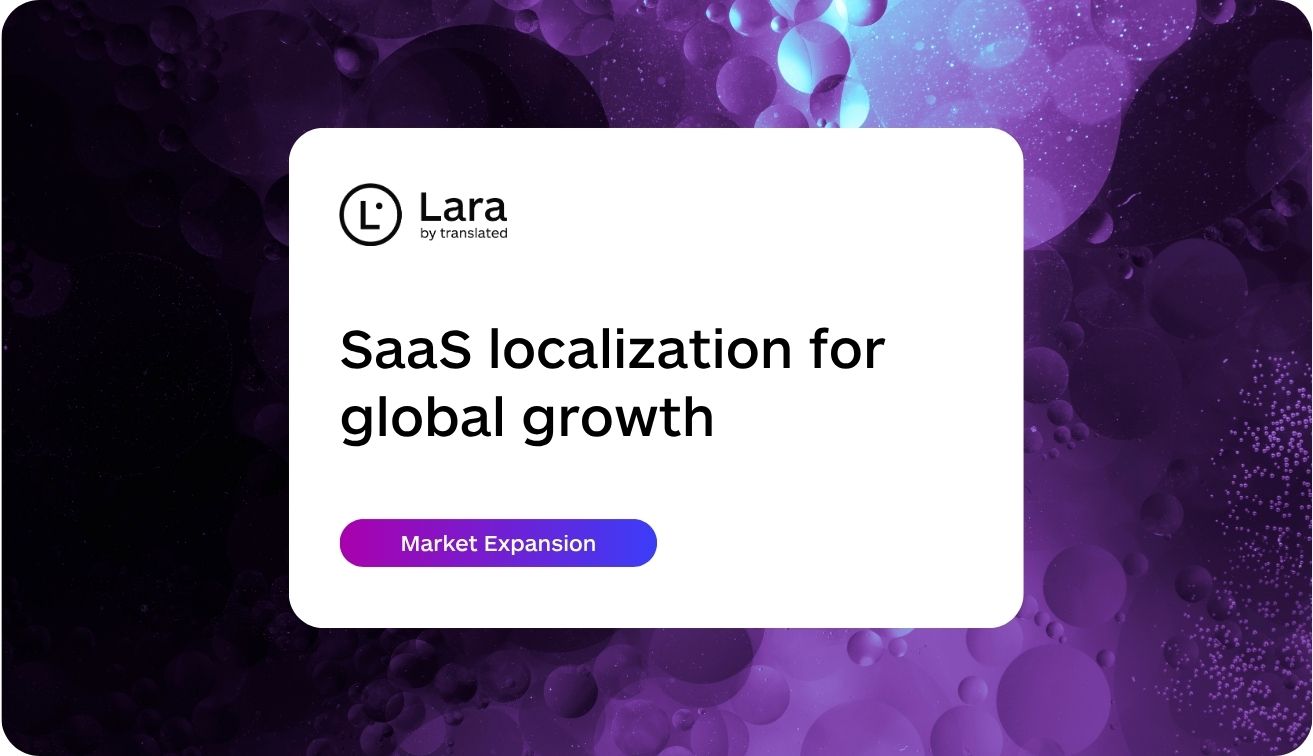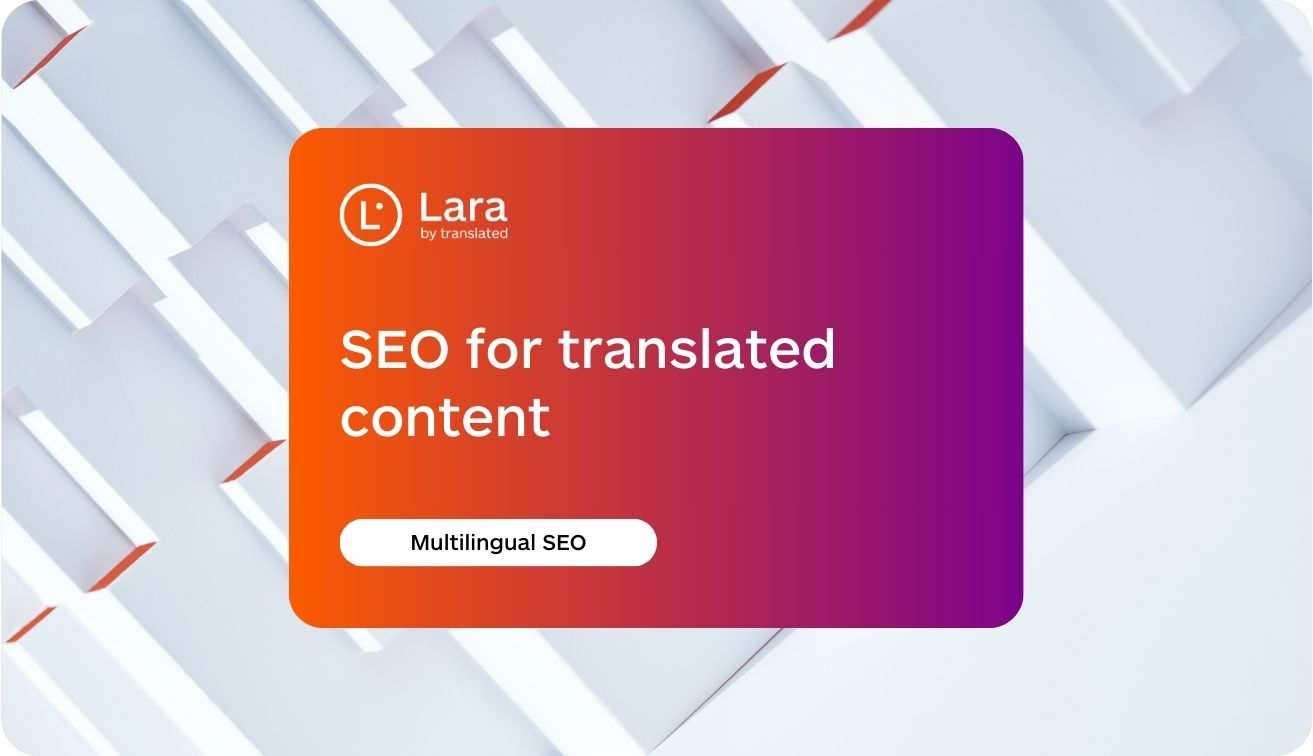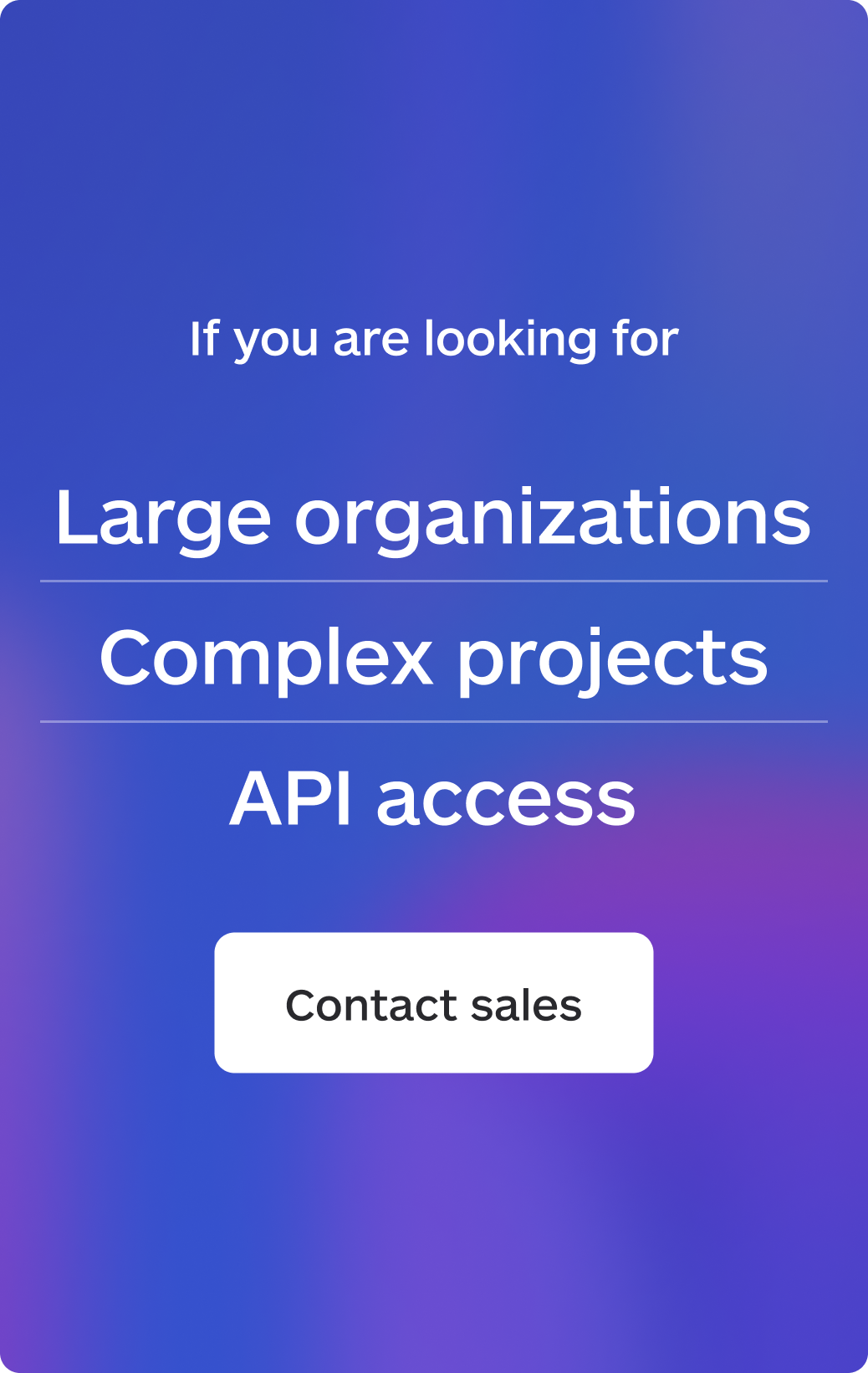SaaS localization is a game-changer for companies that want to connect with people across different countries and cultures. It’s what turns a good product into one that truly feels local, boosting user engagement, driving adoption, and unlocking growth in new markets.
But effective localization isn’t just about translating text. It’s about adapting the whole product experience so it feels right for each audience, from language and design to cultural nuances and user expectations.

In this guide, we’ll explore what it really takes to localize a SaaS platform successfully. We’ll walk through proven strategies, common challenges, and the best tools to help you build products that resonate deeply wherever your users are.
Understanding SaaS localization fundamentals
SaaS localization involves adapting your software product to meet the specific needs, preferences, and cultural expectations of users in different geographic markets. This process extends far beyond simply translating text—it encompasses modifications to your user interface, feature set, pricing structure, payment options, and even your marketing approach.
True localization creates an experience where users feel as if the product was built specifically for them, regardless of their location or language preference. When international users can navigate your platform intuitively in their native language, with familiar cultural references and payment methods, the barriers to adoption significantly decrease.
The most successful global SaaS companies understand that localization is not a one-time project but an ongoing strategic initiative that requires continuous refinement as markets evolve and your product develops.
The difference between translation and localization
While translation is a component of localization, the two terms are not interchangeable:
- Translation focuses on converting text from one language to another while maintaining accuracy
- Localization adapts the entire product experience to suit a specific locale, including cultural references, design elements, functionality, and legal compliance
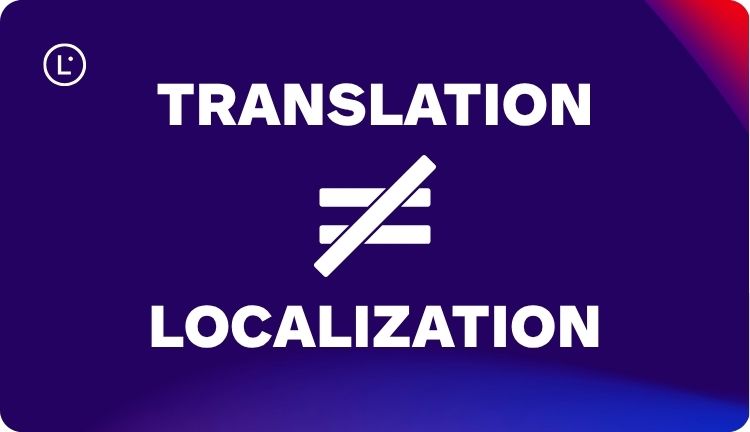
For example, a properly localized SaaS platform might adjust date formats (MM/DD/YYYY vs. DD/MM/YYYY), modify layouts for languages that read right-to-left, adapt currency symbols, and adjust payment methods based on regional preferences. These elements work together to create a seamless experience that feels natural to users in each market.
Key benefits of SaaS localization for global growth
Implementing comprehensive localization strategies for SaaS delivers several significant advantages that directly impact your business growth:
Expanded market reach and user acquisition
By removing language barriers, you instantly make your platform accessible to millions of potential customers who prefer—or require—interaction in their native language. Research consistently shows that users are more likely to purchase products available in their own language, with studies indicating that 65% of customers prefer content in their native tongue, and approximately 40% will not buy from websites presented in foreign languages.
Enhanced user experience and engagement
When users can navigate your platform in their native language with familiar cultural references, their comprehension and comfort levels increase dramatically. This leads to higher engagement rates, more effective feature utilization, and ultimately stronger user satisfaction. Companies like Shopify have demonstrated this by customizing their platforms with localized interfaces and support resources, resulting in improved user metrics across international markets.
Increased conversion rates and revenue
Localizing SaaS platforms directly impacts your bottom line. When pricing displays in local currencies, payment options match regional preferences, and the overall experience feels native to each market, conversion rates typically improve. For instance, one e-commerce SaaS platform reported a 13% increase in conversion rates after implementing comprehensive localization.
Competitive advantage in global markets
In many regions, localized products enjoy a significant advantage over competitors offering only English-language solutions. This advantage is particularly pronounced in markets where English proficiency is lower or where strong local competitors exist. By investing in quality localization, you position your SaaS product as more accessible and user-friendly than non-localized alternatives.
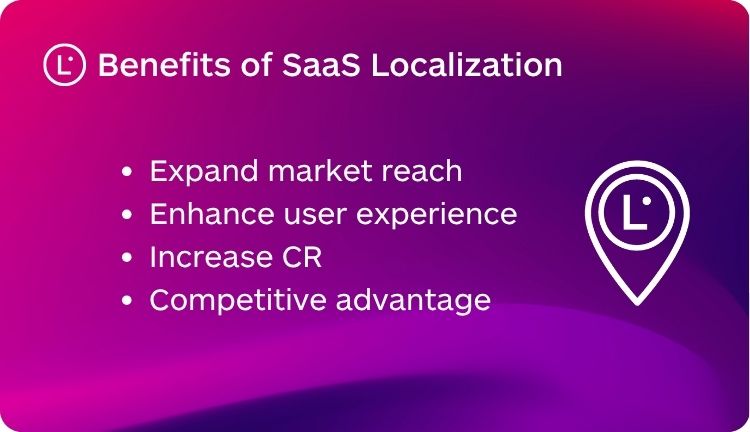
Creating an effective SaaS localization strategy
Developing a comprehensive plan for localizing SaaS platforms requires careful preparation and strategic thinking. Here’s how to approach it methodically:
Conducting thorough market research
Before investing in localization, thoroughly research your target markets to understand potential demand, competitive landscape, cultural nuances, and regulatory requirements. This research should inform which markets to prioritize based on factors like:
- Market size and growth potential
- Competition intensity
- Cultural compatibility with your product
- Regulatory complexity
- Language difficulty and translation costs
Use tools like Google Analytics, market reports, and competitor analysis to identify where your current international traffic comes from and which markets show the most promise.
Building a dedicated localization team
Successful localization requires a cross-functional team with clearly defined roles and responsibilities. This typically includes:
- A localization manager to oversee the entire process
- Native-speaking translators familiar with your industry terminology
- Designers who understand cultural design preferences
- Developers skilled in implementing multilingual infrastructure
- Local market experts who provide cultural context and feedback
Whether you build an in-house team or partner with external specialists, having dedicated resources is crucial for maintaining quality and consistency across all localized elements.
Implementing the right localization infrastructure
Creating the technical foundation for efficient localization is critical. This includes:
- Separating code and content to enable easier updates
- Implementing proper character encoding (UTF-8) to support all languages
- Designing flexible layouts that accommodate text expansion/contraction
- Creating a centralized terminology database for consistency
- Establishing workflows for continuous localization as your product evolves
These technical considerations form the backbone of effective SaaS localization strategies and help prevent costly rework later in the process.
Essential components of comprehensive SaaS localization
When localizing SaaS platforms, several key elements require special attention:
User interface and experience localization
The UI/UX is where users most directly interact with your product, making its localization particularly important:
- Adapt layouts to accommodate languages that may require more space (German typically expands 20-30% compared to English)
- Adjust the interface for right-to-left languages like Arabic and Hebrew
- Modify navigation patterns to match local user expectations
- Ensure all interactive elements function correctly in all languages

Companies like Netflix excel at this by completely adapting their interfaces for different markets, including content recommendations tailored to local preferences.
Content and documentation localization
Beyond the application itself, all supporting content should be localized:
- Marketing materials and website content
- User guides and help documentation
- Email templates and notifications
- Error messages and system alerts
- Legal agreements and privacy policies
This comprehensive approach ensures that users receive consistent, high-quality experiences at every touchpoint with your brand. For example, Life360 used Lokalise AI to translate half a million words into five languages in just one month, achieving up to 80% savings in time and costs.
Lara Translate: streamlining SaaS localization for enhanced efficiency
Lara Translate offers SaaS companies a powerful solution for their localization challenges. With its advanced translation technology, Lara excels particularly in preserving context and meaning across complex SaaS documentation and interfaces. The platform’s Model Context Protocol (MCP) capability enhances the translation process by maintaining critical contextual understanding, ensuring technical terms and industry-specific language are accurately rendered across different languages.
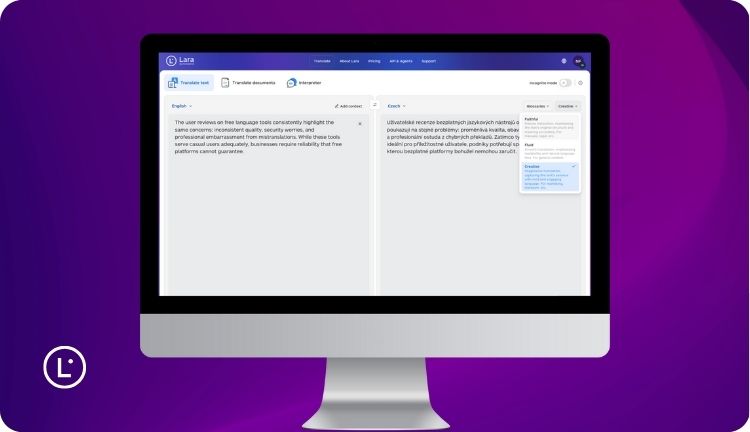
What sets Lara Translate apart for SaaS localization is its exceptional speed and ability to handle large volumes of content critical for software platforms that regularly update features and documentation. Lara enables SaaS businesses to reach global markets more efficiently while maintaining the nuanced language necessary for technical products.
SaaS companies using Lara Translate benefit from significantly reduced localization timelines without sacrificing quality, allowing faster market entry and more responsive updates to localized versions of their platforms.
Pricing and payment localization
Financial aspects of your SaaS require careful localization:
- Display prices in local currencies with appropriate formatting
- Offer regionally preferred payment methods (e.g., Alipay for China)
- Adjust pricing strategies to match local market expectations
- Implement appropriate tax calculations for each region
- Localize billing cycles and subscription terms
For instance, Monday.com localizes its pricing to show in familiar currencies for each market, making the purchasing decision more comfortable for potential buyers.
Legal and regulatory compliance
Each market has unique legal requirements that your localized SaaS must address:
- Data privacy regulations (GDPR in Europe, CCPA in California)
- Industry-specific compliance (HIPAA for healthcare, financial regulations)
- Local consumer protection laws
- Intellectual property considerations
- Employment laws if hiring local staff

Failing to address these requirements can result in significant penalties and damage to your brand reputation.
Selecting the right tools for SaaS localization
Choosing appropriate technology is crucial for efficient localization of SaaS products. Here are the key categories to consider:
Translation management systems (TMS)
A robust TMS serves as the central hub for your localization efforts, enabling you to:
- Manage translation workflows and assignments
- Maintain translation memories for consistency and cost savings
- Track progress and view analytics on localization projects
- Integrate with your development environment for continuous localization
Popular options include Smartling, Phrase (formerly Memsource), and Lokalise—each offering different features and pricing models to suit various needs.
Continuous localization platforms
These specialized tools integrate directly with your development workflow to automate the localization process:
- They automatically detect new content for translation
- Sync translations back into your codebase
- Support agile development with continuous updates
- Provide quality checks and validation
This approach is particularly valuable for SaaS companies with frequent updates and releases.
Machine translation and AI tools
Modern AI-powered translation tools can accelerate the localization process:
- They provide quick initial translations that human translators can refine
- Help maintain consistency across large volumes of content
- Reduce costs for certain types of content
- Continuously improve through machine learning
However, it’s important to note that while AI translation has advanced significantly, human expertise remains essential for capturing nuances, cultural context, and brand voice accurately. The most effective approach typically combines AI efficiency with human refinement.
Localization testing tools
Quality assurance is critical for successful localization:
- Automated testing tools can check for layout issues across languages
- Pseudo-localization helps identify potential problems before translation
- Linguistic QA tools verify terminology consistency and completeness
- User testing with native speakers provides real-world validation
Comprehensive testing ensures that your localized SaaS delivers a high-quality experience for all users.
Overcoming common challenges in SaaS localization
Even with careful planning, localization challenges in SaaS will inevitably arise. Here’s how to address some of the most common issues:
Managing ongoing content updates
SaaS products continually evolve, making localization a perpetual process rather than a one-time project. Establish systems for:
- Identifying new content that requires translation
- Prioritizing updates based on user impact
- Maintaining consistency with existing translations
- Streamlining approval workflows for new content
Implementing continuous localization is key to minimizing the risk of outdated or inconsistent translations. This approach involves integrating localization into your development workflow to keep pace with product updates and market changes. By doing so, you ensure new features and content are always available in all target languages, reducing the lag between product releases and their localized versions.
Balancing quality with cost and time constraints
Localization involves inevitable tradeoffs between quality, cost, and speed. Address this challenge by:

- Segmenting content by importance and visibility to allocate resources accordingly
- Using machine translation for lower-priority content while investing in human translation for critical elements
- Building translation memories to reduce long-term costs
- Implementing efficient review processes to maintain quality standards
With strategic planning, you can maximize results within your resource constraints.
Navigating cultural differences effectively
Cultural adaptation is among the most subtle yet important aspects of localization. Missteps can be avoided by:
- Consulting with local cultural experts during planning stages
- Conducting cultural sensitivity reviews of all materials
- Testing with users from target markets before full rollout
- Remaining receptive to feedback and making adjustments as needed
Remember that what works perfectly in one culture may fail spectacularly in another—even when the language is technically correct.
Maintaining brand consistency across markets
As you adapt your SaaS for different markets, preserving your brand identity can be challenging. Maintain consistency by:
- Developing clear guidelines for how brand elements translate across cultures
- Creating a centralized brand asset management system
- Training localization teams on your brand voice and values
- Regularly reviewing localized materials for alignment with global brand standards
The goal is to adapt appropriately for each market while ensuring your brand remains recognizable worldwide.
Best practices for successful SaaS localization
To maximize the effectiveness of your localization efforts, follow these best practices for SaaS localization:
Design with localization in mind from the start
Building localization considerations into your product from the beginning is significantly more efficient than retrofitting later:
- Implement internationalization (i18n) principles in your codebase
- Create flexible layouts that accommodate text expansion
- Use variables for elements that will change across locales
- Separate content from code to facilitate updates
This approach, sometimes called “internationalization before localization,” saves substantial time and resources in the long run.
Leverage both machine translation and human expertise
The most effective localization strategies combine technological efficiency with human insight:
- Use AI translation for initial drafts and high-volume content
- Engage human translators for refinement and cultural adaptation
- Implement quality assurance processes with native speakers
- Continuously improve your translation memory with human-approved content
This hybrid approach balances speed and cost-efficiency with the quality and cultural accuracy that only humans can provide.
Prioritize markets and features strategically
With limited resources, strategic prioritization is essential:
- Begin with markets showing the highest potential return
- Focus initially on the most critical user journeys and features
- Implement a phased approach, expanding scope over time
- Use analytics to identify which localized elements drive the most engagement
This focused approach allows you to demonstrate value quickly while building toward comprehensive localization.
Implement continuous feedback loops
Localization quality improves through iterative refinement:
- Gather user feedback from each market regularly
- Monitor engagement metrics across localized versions
- Conduct periodic reviews with local experts
- Update translations and cultural elements based on real-world performance
These feedback mechanisms help you continuously enhance the user experience in each market.
Develop comprehensive style guides and glossaries
Maintaining consistency across all content and languages requires clear references:
- Create detailed style guides for each target language
- Develop multilingual glossaries of key terms and their approved translations
- Document cultural preferences and taboos for each market
- Share these resources with all stakeholders involved in localization
These reference materials ensure that everyone involved in the localization process works toward the same standards and goals.
Measuring the success of your SaaS localization efforts
To ensure your SaaS localization strategy delivers meaningful business results, implement appropriate metrics and monitoring:
Key performance indicators for localization
Track metrics that reflect both localization quality and business impact:
- User engagement and retention in localized markets
- Conversion rates compared to non-localized versions
- Customer support tickets related to localization issues
- User feedback and satisfaction scores
- Revenue growth in localized markets
These indicators help quantify the return on your localization investment.
Continuous improvement processes
Establish systems for ongoing enhancement:
- Regular analysis of performance data across markets
- Comparative benchmarking against competitors
- Structured review cycles for all localized content
- Mechanisms to incorporate user feedback into updates
Localization is never truly “finished”—it requires ongoing attention and refinement to maintain effectiveness as markets and user expectations evolve.
The strategic advantage of effective SaaS localization
In an increasingly competitive global SaaS landscape, comprehensive localization strategies for SaaS have evolved from a nice-to-have feature to a critical business imperative. Companies that invest in thoughtful localization—adapting not just language but the entire user experience for different markets—gain significant advantages in international growth, user satisfaction, and competitive positioning.
By approaching localization as a strategic, ongoing initiative rather than a one-time project, SaaS companies can build stronger connections with users worldwide and unlock new avenues for sustainable growth. The most successful global SaaS businesses recognize that speaking their customers’ language—both literally and figuratively—is fundamental to building lasting relationships in international markets.
As you embark on your own localization journey, remember that the goal extends beyond mere translation. True localization creates an experience where users in every market feel that your product was built specifically for them, addressing their unique needs and preferences in a way that feels natural and intuitive.
FAQs
How much does SaaS localization typically cost?
The cost varies widely based on factors like the number of languages, content volume, and quality requirements. Small projects might start at a few thousand dollars, while enterprise-level localization can require significant ongoing investment. Consider not just the initial translation costs but also ongoing maintenance, testing, and updates.
Which languages should we prioritize for localization?
This depends on your specific business goals and target markets. Analyze your current user base, website traffic by geography, and market research to identify the most promising opportunities. Common starting points include major European languages (French, German, Spanish), East Asian languages (Japanese, Korean, Chinese), and Portuguese for the Brazilian market.
How long does the localization process typically take?
Timeline varies based on scope, but initial localization for a moderately complex SaaS platform typically takes 2-3 months for each language. Building the proper infrastructure for continuous localization is an upfront investment that significantly reduces ongoing maintenance time.
Should we use professional translators or crowdsource translations?
While crowdsourcing can be cost-effective for certain content types, professional translators typically deliver higher quality and consistency, especially for technical or marketing content. Many companies use a hybrid approach, leveraging professional translations for core content and community input for supplementary materials.
How do we handle customer support across multiple languages?
Options include building multilingual support teams, partnering with localized support providers, implementing AI-powered translation for tickets, and developing comprehensive self-service resources in each language. The right approach depends on your support volume, complexity, and budget constraints.
This article is about
- SaaS localization strategies that go beyond basic translation
- Key benefits of localization for user experience and global growth
- Best practices and tools for effective SaaS localization
- Measuring the impact of localization on international expansion
